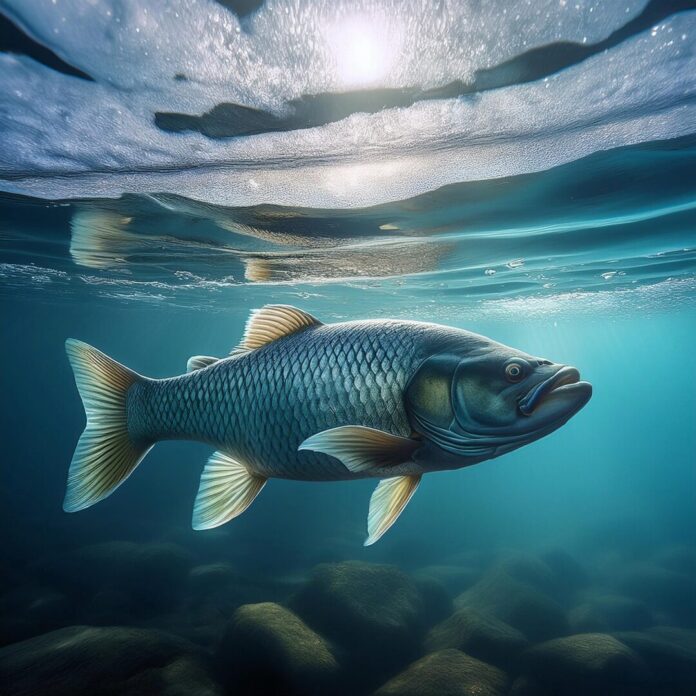At a glance: Kansas State University fisheries and aquatics specialist Joe Gerken shares how some warm-blooded wildlife sustain themselves during cold temperatures.
More information: Joe Gerken, 785-532-1418, gerkenje@ksu.edu
By Jacob Klaudt, K-State Research and Extension news service
MANHATTAN, Kan. – When most elements in nature get colder and freeze, they usually get denser in composition. However, as water approaches its freezing point of 32 degrees Fahrenheit, it transitions from liquid water to solid ice and becomes less dense.
This feature allows ice to float up and warmer water to plunge deeper – a key feature permitting aquatic life to live beneath water in its frozen state.
Freezing conditions and ice have impacts beyond habitat, though, said Kansas State University fisheries and aquatics extension specialist Joe Gerken, noting that many species have uniquely adapted to survive frigid weather.
“In the winter, the densest water is going to be warmer and sit below the ice, so we’re going to start seeing fish that want to be at greater depths,” he said. “Salamanders and turtles are going to tend to go down to the benthos, or the bottom of a pond or stream, and thrive in those deeper habitats.”
Yet, if whole bodies of water freeze, so will fish, according to Gerken. In Kansas, fish have no choice but to seek warmer refuge in deeper habitats, but in places like Antarctica, some aquatic species have evolved to meet the challenges their harsh environment provides.
“There’s a group of fish called the notothenioids that live in saltwater, which can get subfreezing,” Gerken said. “These fish have antifreeze proteins in their blood, which keeps their bodies from turning to ice.”
Besides fish, reptiles and amphibians also have tactics for fighting against the freeze. Specifically, these animals enter a state called brumation – one similar to the process of hibernation observed in mammals.
“We see the amount of oxygen that these animals use decrease to almost nothing,” Gerken said. “Ice can start to form over surfaces of their bodies, and species like to hide underneath mud and bury themselves; they just hang out there and do nothing – not even eat.”
While breathing slows in turtles, it doesn’t completely stop, Gerken said.
“They practice cloacal breathing,” he said. “They put their tails up in the air where their cloaca is, and they breathe. Normally, that’s where waste comes out.”
Cloacal breathing and brumation end when warmer temperatures return with spring days and more daylight.
“Those things trigger these animals to wake up and come out of this situation,” Gerken said. “The animals then start feeding because they’ve used up a lot of their fat reserves. Then they’re going to jump right into breeding season.”
Warmer days in January and February can trick species into exiting brumation earlier than desired.
“You might see them climb up out of a log and try to warm up a little bit,” Gerken said. “Then as soon as those temperatures start to drop again, they say, ‘Hey, I don’t want to be around this and go back to their little hiding spot’ and reenter that dormancy stage.”
He added: “It’s not like it’s they are either entirely in it or out of it; they can peek in and out from time to time.”
According to Gerken, this back and forth can cause confusion about animal activity during brumation.
“They’re still fully alive,” he said. “They’re still moving; they get up and occasionally move from one side of their den to another.”
More information about animals and their winter habits is available online through K-State Extension Wildlife Management.
Related: Fins, Furs, and Feathers podcast | KSRE Wildlife YouTube | Gone Fishin’: Colder months signal new opportunity for anglers in Kansas





